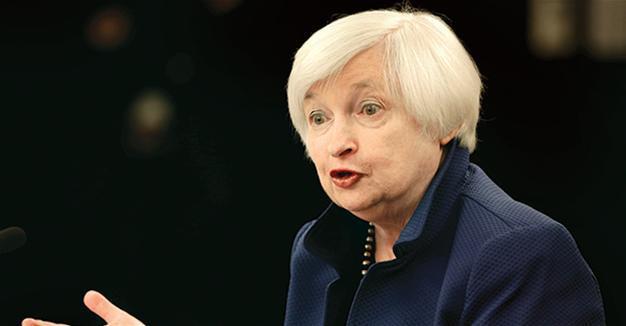Moderate rise in US economy, but job shortages spread: Fed
WASHINGTON - Agence France-Presse

The U.S. economy has continued to expand with only modest price increases, but companies are increasingly complaining of trouble finding workers, including for low-skill jobs, the Federal Reserve said on April 19.
In its periodic report on economic conditions, known as the beige book, the Fed noted fairly widespread optimism in the manufacturing sector, as output continued to gain, tempered with some caution due to issues including uncertainty over Trump administration trade policies.
All of the 12 Federal Reserve districts across the country once again reported continued economic growth since the March survey, “with the pace of expansion equally split between modest and moderate” according to the report, which collects views of economists, business contacts and others across the country.
But amid the growth and rising employment, the striking feature of the report was nearly every district saw increasing signs of labor shortages, which now extend beyond high-skilled technical jobs and are hitting sectors like construction.
“Labor markets remained tight, and employers in most districts had more difficulty filling low-skilled positions, although labor demand was stronger for higher skilled workers,” the survey said.
The competition for workers led to anecdotal reports of companies offering higher pay or bonuses, staffing firms declining to work with employers paying less than $11 an hour, and one South Carolina construction firm closing its doors after 25 years.
And although wage increases generally ranged from “modest to moderate,” the potential for tight labor markets to push wages higher and spill over into inflation will be a key concern as central bankers review the report ahead of the May 2-3 policy meeting to determine the level of the benchmark lending rate.
Already worker shortages in some areas and increased labor costs “were restraining growth in some sectors, including manufacturing, transportation, and construction.”
The Fed has increased the key interest rate twice since December, and is widely expected to hike twice more this year to get ahead of inflation as the economic recovery accelerates.
However, if inflation ignites it likely would prompt the Fed to raise rates more quickly.
The Fed’s preferred measure of inflation, the Personal Consumption Expenditures price index, grew at an annual rate of 2.1 percent in February, passing the Fed’s two percent target for the first time since early 2012.
The PCE price measure has been gaining steadily and joins other data showing gradually rising prices, including the consumer price index which in March rose 2.4 percent.
Most areas of the country reported a “modest to moderate” expansion in manufacturing, a key focus of the Trump administration, with widespread optimism about orders in the coming six months.
However, some businesses were cautious and noted some of the optimism might be overblown.
“Several contacts expressed concerns about policy uncertainty,” the Boston Fed said, noting worries about trade policy.
The Fed in Cleveland, Ohio said a few large manufacturers “cautioned that the new found optimism may be unwarranted,” and pointed to the strong dollar and uncertain trade policy as issues of concern.
Dallas-area firms were particularly concerned with trade policies impacting Mexico, which has close ties to that region of the country.
Labor shortages also could hinder manufacturing, with firms in the district of Richmond, Virginia, saying the issue has pushed up labor costs and squeezed margins “leading to cutbacks in planned capital spending.”
 The U.S. economy has continued to expand with only modest price increases, but companies are increasingly complaining of trouble finding workers, including for low-skill jobs, the Federal Reserve said on April 19.
The U.S. economy has continued to expand with only modest price increases, but companies are increasingly complaining of trouble finding workers, including for low-skill jobs, the Federal Reserve said on April 19.